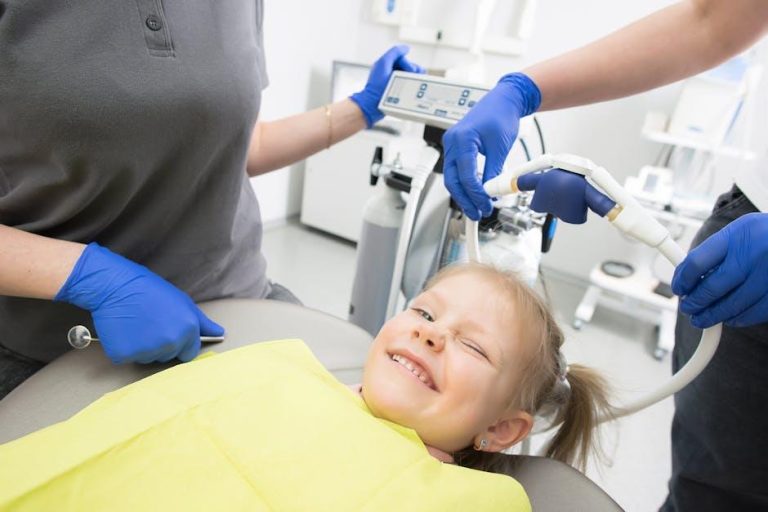
1 in 3 Kids Has Dental Problems, Poll Finds – U.S. News & World Report
A recent poll highlighted by U.S. News & World Report reveals a concerning statistic: 1 in 3 children in America suffers from dental problems. This startling finding shines a spotlight on pediatric oral health and emphasizes the urgent need for awareness, preventive care, and timely treatment.
Understanding the Scope: How Widespread Are Dental Problems in Kids?
Dental problems in children encompass a wide range of conditions, from cavities (tooth decay) and gum disease to more severe issues like abscesses or developmental anomalies. According to the recent U.S. poll, about 33% of kids across various age groups reported at least one oral health problem in the past year.
Here are some of the most common dental issues affecting children today:
- Tooth Decay and Cavities: The most prevalent dental problem, caused primarily by poor oral hygiene and high sugar consumption.
- Gingivitis: Early stage gum disease linked to plaque buildup and inadequate brushing.
- Tooth Sensitivity: Often caused by enamel wear, cavities, or injury.
- Malocclusion: Misalignment of teeth and bite, sometimes hereditary or due to thumb-sucking habits.
- Oral Infections: Bacterial infections including abscesses that require immediate treatment.
Root Causes Behind the Alarming Statistic
The increase in dental problems among children is tied to several factors, including lifestyle, access to dental care, and socio-economic status. Understanding these root causes is crucial for parents, educators, and healthcare professionals aiming to reduce the risk.
- Poor Oral Hygiene Habits: Inadequate brushing and flossing allow plaque to build up, leading to cavities and gum issues.
- Diet High in Sugary Foods and Drinks: Sugary snacks and beverages are a leading contributor to tooth decay in kids.
- Lack of Regular Dental Checkups: Without frequent professional cleanings and early detection, dental problems can escalate quickly.
- Limited Access to Dental Care: Some families face financial, geographic, or insurance barriers to timely dental visits.
- Parental Awareness: Children’s oral health often reflects the knowledge and habits of their caregivers.
Why Children’s Dental Health Should Be a Priority
Dental problems in childhood can have several immediate and long-term effects, including pain, difficulty eating or speaking, and poor self-esteem. Moreover, untreated oral infections may lead to serious health complications and affect overall wellbeing.
| Impact | Description | Long-Term Risk |
|---|---|---|
| Tooth Pain & Discomfort | Causes trouble with eating and concentration in school. | Chronic pain can affect learning and social interactions. |
| Speech Development Issues | Misaligned or missing teeth may impair speech clarity. | May require orthodontic or speech therapy interventions. |
| Infections & Abscesses | Serious infections can spread to other body systems. | Potential for hospitalization or long-term health problems. |
| Psychological Effects | Low self-esteem linked to visible dental problems. | May influence mental health and social development. |
Benefits of Early Dental Care for Kids
Proactively managing children’s oral health offers multiple benefits such as reducing the risk of cavities, improving overall health, and fostering lifelong healthy habits:
- Prevention of Pain and Infections: Regular cleanings and fluoride treatments strengthen teeth and prevent decay.
- Early Detection of Problems: Identifying issues early avoids costly and invasive treatments later.
- Improved Nutrition: Healthy teeth enable proper chewing and digestion.
- Boosted Confidence: A bright smile supports social interactions and self-esteem.
- Establishing Good Habits: Early dental visits encourage brushing, flossing, and balanced diets.
Practical Tips for Parents to Protect Their Children’s Teeth
Parents are the frontline defenders of their children’s oral health. Here are some expert-backed tips to help ensure your child’s teeth stay cavity-free and healthy:
- Start Dental Care Early: Wipe your baby’s gums even before teeth erupt, then brush twice daily once teeth appear.
- Use the Right Tools: Choose age-appropriate toothbrushes with soft bristles and fluoridated toothpaste.
- Limit Sugary Snacks: Swap candies and soda for fresh fruits, vegetables, and water.
- Regular Dentist Visits: Schedule the first dental checkup by the child’s first birthday and follow up every 6 months.
- Lead by Example: Brush and floss as a family to reinforce good habits.
- Educate Kids: Teach them the importance of oral health in a fun, engaging way.
Case Study: Success Story of Preventing Dental Problems
Emma, a mother of two, noticed her eldest child was complaining of tooth pain and had trouble eating. After learning about the 1 in 3 kids dental issues statistic, she made it a priority to educate her family on oral health.
- Emma introduced a daily brushing chart to make oral care fun and consistent.
- She reduced sugary drinks and replaced snacks with healthier alternatives.
- They began visiting a pediatric dentist regularly, catching issues early.
- Within a year, her children showed significantly improved oral health with no new cavities or infections.
Emma’s experience demonstrates how informed, consistent care can reverse trends and protect children’s smiles.
Conclusion: Safeguarding Our Kids’ Smiles Together
The revelation that 1 in 3 kids has dental problems is both a wake-up call and an opportunity. By understanding the scope of this issue — and implementing practical, everyday strategies — parents, caregivers, and healthcare providers can make a significant impact on children’s oral health outcomes.
Remember, a healthy smile is foundational not only to a child’s well-being but also to their confidence and overall quality of life. Stay proactive, seek early advice from dental professionals, and prioritize oral hygiene at home to ensure every child enjoys a bright, healthy smile for years to come.
For more information on children’s dental care and to find resources in your area, visit U.S. News – Dental Health.


